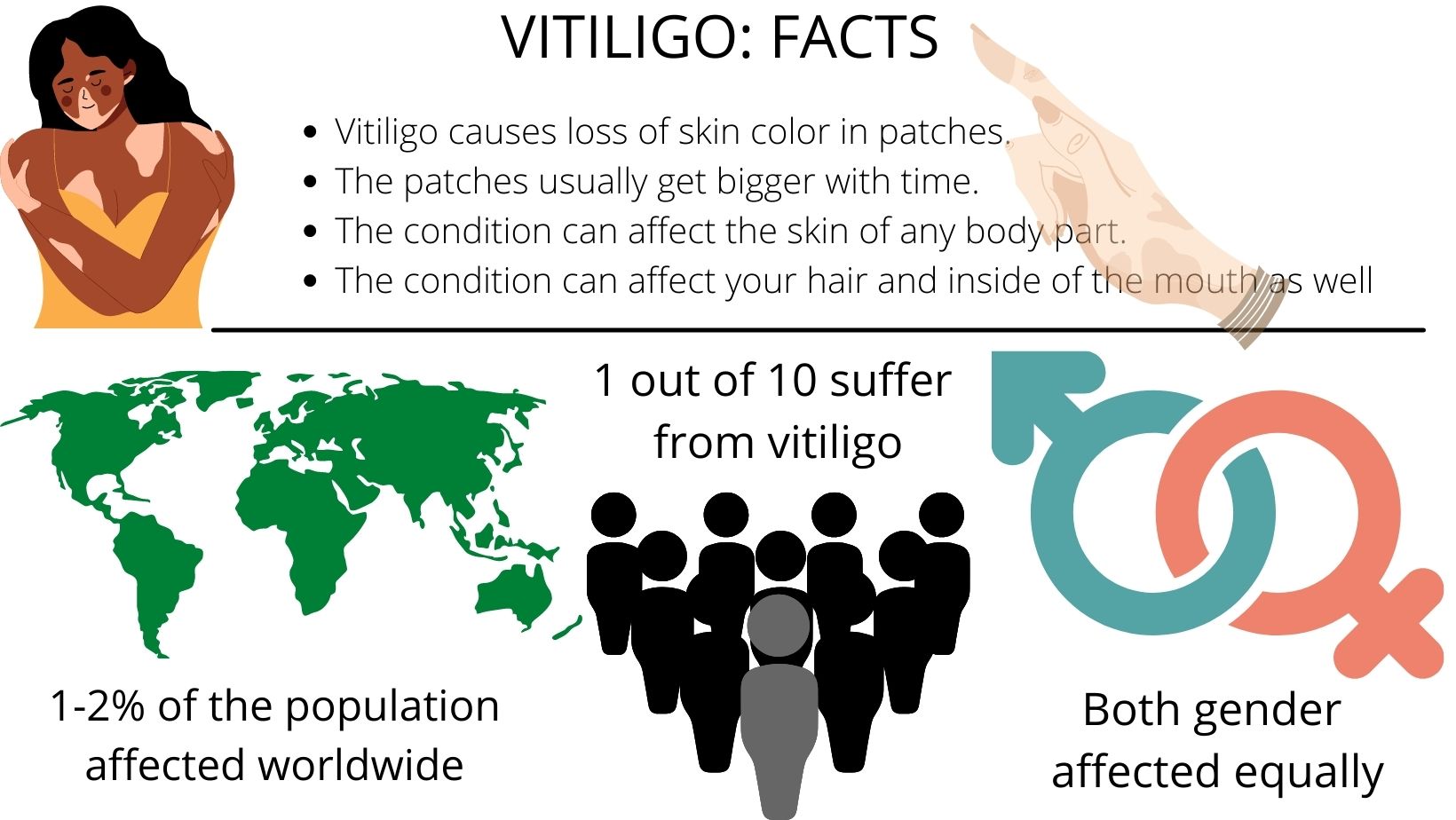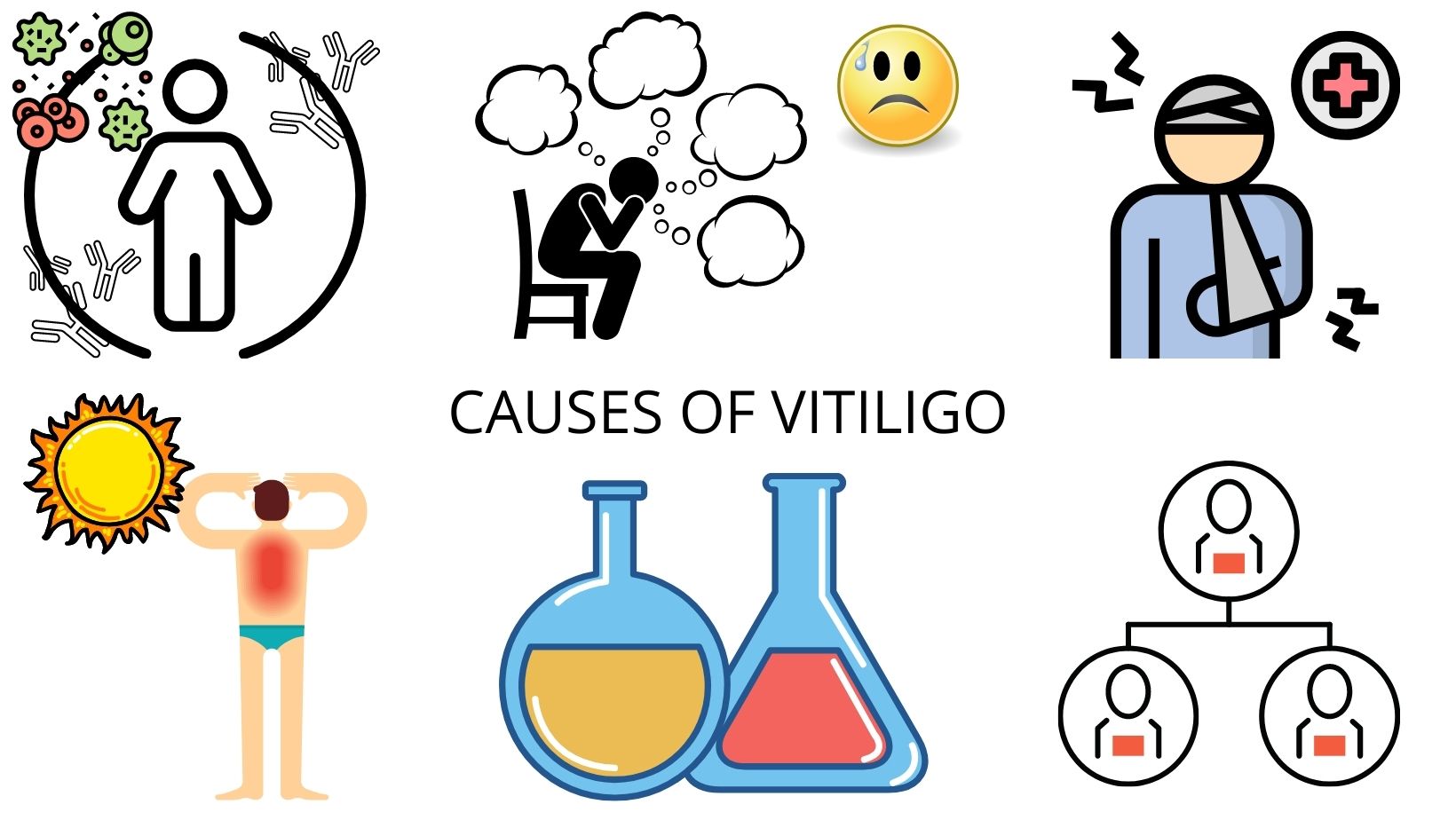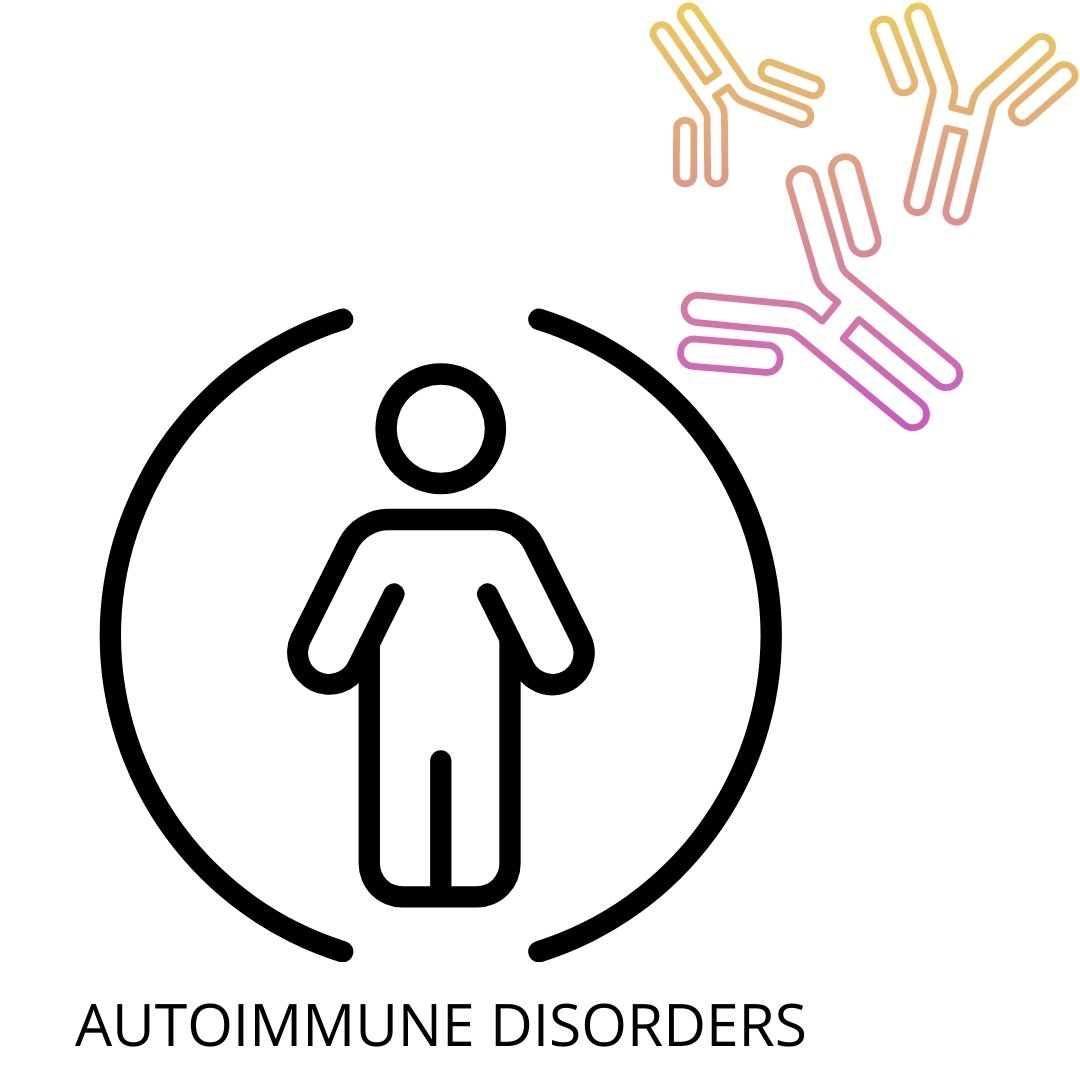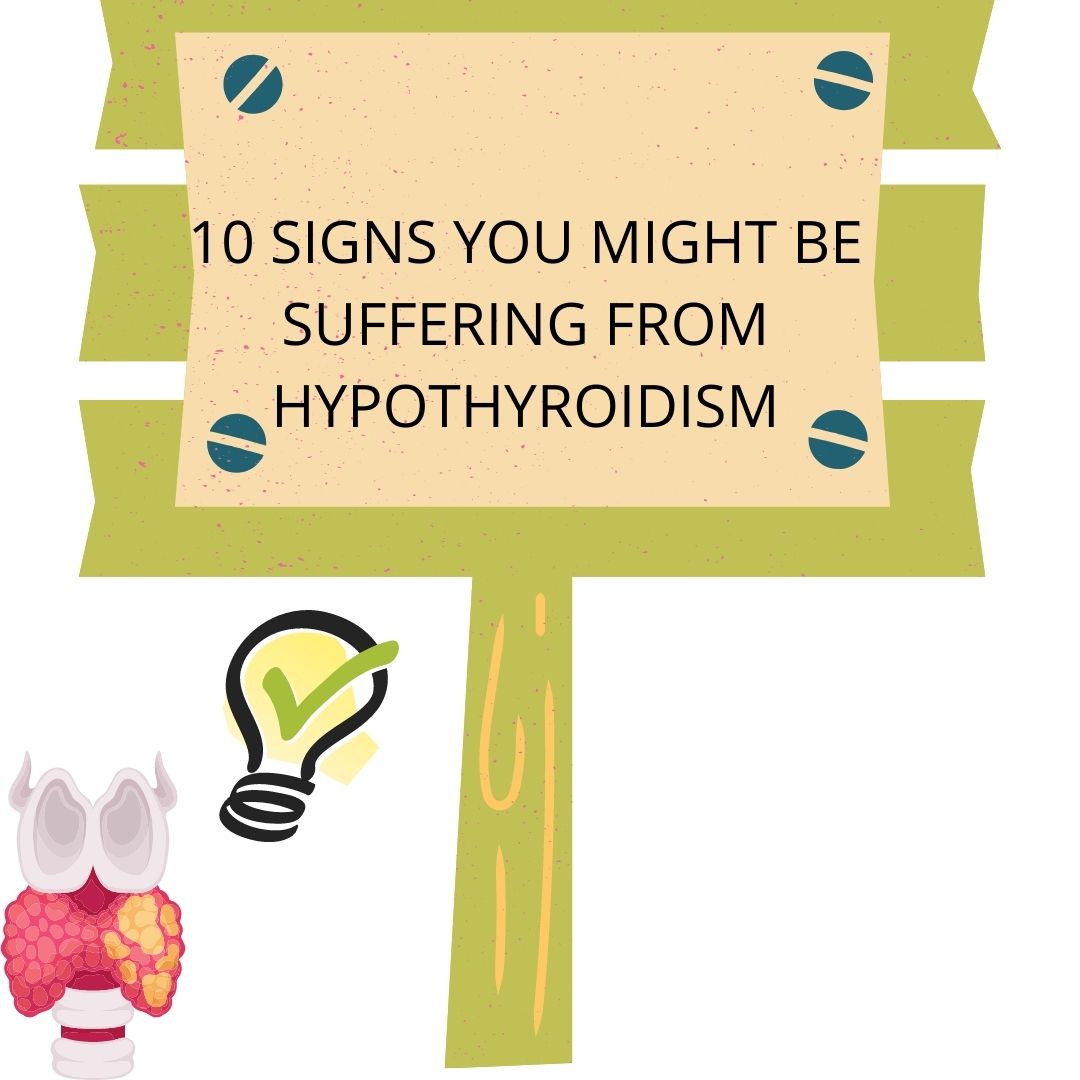THE DEFINITIVE GUIDE FOR THE TREATMENT OF VITILIGO
WHAT IS VITILIGO?
Vitiligo is an acquired autoimmune disorder in which there is focal loss of melanocytes which are pigment-producing cells in the skin and give tone to our skin. In the case of vitiligo; melanocytes are targeted by the immune system of the body and are destroyed resulting in loss of pigment from the area.
So vitiligo is a skin condition in which the skin loses its color and smooth white macules appear on the skin. The condition can affect the skin of any part of the body including the hair and inner side of the mouth.
Across the world, about 1-2% of the population is affected and 95% of the population develops the patch before the age of 45 years. Both genders are affected equally and there is no preponderance to any sex. about 20% of the patients have a family history of vitiligo.
Since it is an autoimmune disorder, control of the patches is quite difficult.
WHAT ARE THE RISK FACTORS FOR ACQUIRING OF VITILIGO?
- Family history of vitiligo
- Family history of autoimmune disorders such as diabetes, thyroid, adrenal disorders, etc.
- Associated autoimmune disorders such as diabetes, thyroid, adrenal disorders, etc.
- Trauma and sunburn
WHAT ARE THE TYPES OF VITILIGO?
Vitiligo may be classified into localized vitiligo and generalized vitiligo.
-Localized vitiligo may be further classified into:
- Focal: in this type hypo-pigmented spots are confined to one or more areas.
- Segmental: in this type of vitiligo one or more areas of hypo-pigmentation are seen but spots are confined to one side of the body only. This type is usually seen in children.
- Mucosal: in this type of vitiligo only the mucous membrane is affected.
-Generalized vitiligo can be classified further into:
- Acrofacial: hypo-pigmentation is seen on parts that are away from the center of the body I.e. face, head, extremities, etc.
- Universal: hypopigmentation covering almost the whole body.
- A mixed type of vitiligo may also be seen in which various patterns can be seen together.
WHAT ARE THE SYMPTOMS OF VITILIGO?
- Hypopigmented spots on the skin usually starting from the sun-exposed areas. Sometimes graying of hair on the affected parts is seen along with graying of eyelashes.
- Mucosal linings are also affected in few, causing depigmentation of the mucous membranes.
- Itching may also be seen in a few cases especially inactive stage along with sensitivity on exposure to sun.
WHAT ARE THE CAUSES OF VITILIGO?
The exact cause of vitiligo is not known but a few possibilities are:
- Autoimmune cause: pigment producing cells ( melanocytes) are attacked by the immune cells of the body and are destroyed.
- Stress: Stress may also trigger vitiligo
- Sunburn: excessive and prolonged exposure to sun can also trigger vitiligo.
- Chemical exposure may also cause vitiligo
- Family history of vitiligo increases the chances of inheritance of vitiligo.
- Injury: at the place of injury depigmentation may start with the healing process.
A hypothesis also states that depigmentation is seen along with the pressure areas of the body I.e along the waistline.
DIAGNOSIS OF VITILIGO
- Presence of depigmented spots
- The Antinuclear antibody helps in the determination of autoimmune disorders.
- Thyroid profile for presence of thyroid disorder, thyroid peroxidase antibody for the presence of autoimmune thyroid disease.
WHAT ARE THE TREATMENT OPTIONS FOR VITILIGO?
- Phototherapy: exposure to UVA or UVB light can help some individuals with the condition.
- Homeopathic medicine
HOW TO MANAGE VITILIGO?
Educate the patient and family members about the disease.
Clarify the facts about vitiligo that :
- It is a non-contagious disorder and can't spread by contact.
- It has no age, sex, or ethnic discrimination.
- Vitiligo is photosensitive and patients should avoid exposure of skin to direct sunlight for prolonged period.
- Dietary advice should also be given like:
- Cashew nuts aggravate vitiligo
- Food with vitamin c aggravates vitiligo
HOMEOPATHIC MANAGEMENT
Homeopathy has great scope in the treatment of vitiligo as after thorough case taking and evaluation of the case constitutional best-suited medicine is given to the patient which can promptly help in re-pigmentation and can cause complete cure also.
There are various medicines like sulphur, arsenic album, tuberculinum, phosphorus, calcarea carb, psorinum etc which can cure vitiligo depending on the case and personality of the patient.
WHAT ER THE Dos AND DON’Ts FOR A PATIENT OF VITILIGO?
Do’s
- Take a healthy nutritious diet.
- Cover the body while going out in sun.
Don’ts
- Avoid exposure to the sun.
- Avoid sour food items.
- Avoid cashew nuts.
- Avoid scratching as it may help in the spread of spots.
WATCH THE FULL VIDEO ON VITILIGO TO UNDERSTAND MORE






Comments
We have received your comment , Thank You !